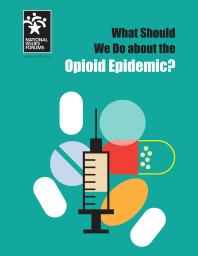The 2019 National Survey on Drug Use and Health reports that 139.7 million Americans age 12 or older were past month alcohol users, 65.8 million people were binge drinkers in the past month, and 16 million were heavy drinkers in the past month. Excessive alcohol use can increase a person’s risk of stroke, liver cirrhosis, alcoholic hepatitis and cancer. It can also lead to risk-taking behavior, including driving while impaired (source: SAMHSA).
In 2019, NSDUH data show an estimated 5.5 million people aged 12 or older were past users of cocaine, including about 778,000 users of crack. In the short term, cocaine use can result in increased blood pressure, restlessness, and irritability. In the long term, severe medical complications of cocaine use include heart attacks, seizures, and abdominal pain (source: SAMHSA).
According to the National Survey on Drug Use and Health (NSDUH), 19.7 million American adults (aged 12 and older) battled a substance use disorder in 2017. Drug abuse and addiction cost American society more than $740 billion annually in lost workplace productivity, healthcare expenses, and crime-related costs (source: American Addiction Centers).
National surveys indicate that nearly 21.7 million Americans aged 12 and older have used inhalants at least once in their lives. NIDA's Monitoring the Future (MTF) survey reveals that 13.1% of 8th graders have used inhalants. Even sporadic or single episodes of inhalant abuse can be extremely dangerous. Inhalants can disrupt heart rhythms and cause death from cardiac arrest, or lower oxygen levels enough to cause suffocation. Regular abuse of these substances can result in serious harm to vital organs, including the brain, heart, kidneys, and liver. Experts estimate that there are several hundred deaths each year from inhalant abuse, although under-reporting is still a problem (source: Alliance for Consumer Education).
2019 NSDUH data indicates that 48.2 million Americans aged 12 or older, 17.5 percent of the population, used marijuana in the past year. Marijuana can impair judgment and distort perception in the short term, lead to memory impairment in the long term, and have significant health effects on youth and pregnant women (source: SAMHSA).
The National Survey on Drug Use and Health, found that in 2014 more than 17 million persons aged 12 or older reported using MDMA at least once in their lifetimes. The Drug Abuse Warning Network, maintained until 2011 by the Substance Abuse and Mental Health Services Administration (SAMHSA), reported that mentions of MDMA in drug-related hospital emergency departments visits were 22,498 for 2011 (source NIDA).
 The Official Patient's Sourcebook on MDMA Dependence
by
The Official Patient's Sourcebook on MDMA Dependence
by
In 2019, NSDUH data show that approximately 2 million people used methamphetamine in the past year and approximately 1 million people had a methamphetamine use disorder. The National Institute on Drug Abuse reports that overdose death rates involving methamphetamine have quadrupled from 2011 to 2017. Frequent meth use is associated with mood disturbances, hallucinations, and paranoia (source: SAMHSA).
An estimated 745,000 people had used heroin in the past year, based on 2019 NSDUH data. In 2019, there were 10.1 million people age 12 or older who misused opioids in the past year. The vast majority of people misused prescription pain relievers (2019 NSDUH). According to the Centers for Disease Control and Prevention’s Understanding the Epidemic, an average of 128 Americans die every day from an opioid overdose (source: SAMHSA). One widely abused opioid, Fentanyl, is 50 to 300 times more potent than morphine and is a factor in more half of overdose deaths (https://drugabusestatistics.org).
 What Should We Do about the Opioid Epidemic?
by
What Should We Do about the Opioid Epidemic?
by
Data from the 2019 NSDUH reports that 58.1 million people were current (i.e., past month) tobacco users. Specifically, 45.9 million people aged 12 or older in 2019 were past month cigarette smokers. Tobacco use is the leading cause of preventable death, often leading to lung cancer, respiratory disorders, heart disease, stroke, and other serious illnesses. The CDC reports that cigarette smoking causes more than 480,000 deaths each year in the United States (source: SAMHSA).
To view chat hours, submit an e-mail question, or view other contact options, please visit the Ask the InfoHub webpage.
Michael Hooper
Electronic Resources Librarian
hooperm@apsu.edu